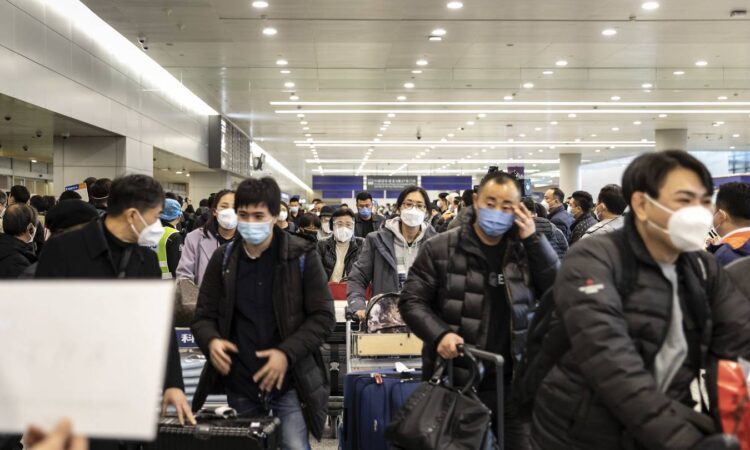
China has dismantled the last pillar of its zero-Covid policy that has isolated the country and weighed on its economic growth, priming the world’s second-largest economy for an uplift after three years of border closures.
There are no signs yet that the country’s trade flows have been affected by a resurgence of Covid infections and eased border restrictions in December, according to a report by the Germany-based Kiel Institute for the World Economy.
“China’s economy could receive a positive boost in the coming months from the lifting of the zero-Covid policy,” Vincent Stamer, head of the Kiel Trade Indicator, said in the report.
Over the past month, China has begun gradually easing some of the world’s strictest Covid-19 rules. These included frequent PCR tests, restricted movement and lockdowns that severely damaged its economy. The reopening is expected to revive an economy that has suffered its lowest growth in nearly half a century.
In December, the World Bank said it expected China’s economy to grow 2.7 per cent in 2022, before recovering to 4.3 per cent in 2023, amid a reopening of the economy, according to Navigating Uncertainty, the latest China Economic Update released by the Washington-based lender.
China’s growth outlook is faces “significant risks”, stemming from the uncertain trajectory of the pandemic, how policies evolve in response to the Covid-19 situation and the responses of households and businesses, the World Bank said.
Additionally, “persistent stress” in the real estate sector could have wider macroeconomic and financial spillovers, while risks related to climate change are growing, it said.
External risks to China’s growth outlook include highly uncertain global growth prospects, greater-than-expected tightening in financial conditions and heightened geopolitical tensions, according to the World Bank report.
In December, China’s exports declined 2.4 per cent from the previous month, which is “within the normal fluctuation” and implies stagnation for the fourth quarter as a whole, while imports rose 4.8 per cent, the Kiel Trade Indicator data showed.

Globally, trade stabilised in December as 2022 drew to a close, particularly for the EU and Germany, despite continuing fears of an economic recession, the report said.
Global trade showed more activity in December, growing 0.9 per cent month-on-month, lead by growth in Europe, the data showed.
“Overall, global trade is stabilising, which is a good sign given that there continue to be fears of recession,” Mr Stamer said.
In the EU, exports grew 2.7 per cent and imports were up 2.6 per cent in December compared to the previous month, the report said. In Germany, exports rose 2.3 per cent, but imports fell 1.5 per cent during the same period.
“German foreign trade can look back on a successful 2022 in the face of adverse circumstances. Neither the supply bottlenecks nor Russia’s war of aggression led to any decisive slumps,” Mr Stamer said.
“When the global economy has overcome its weak phase in 2023, this should also give German foreign trade an additional boost.”
The US recorded an increase in exports of 1.5 per cent and a decrease in imports of 4.7 per cent compared to November.
Russia’s trade remained under pressure in December, showing declines in both exports and imports of 2.5 per cent 4.4 per cent, respectively.
While global trade stabilised, the number of containers shipped was down significantly as a result of a weak global economy, the report said.
Since the beginning of 2022, the volume of containers traded has fallen from more than 14 million to the current number of about 13 million containers, it said.
Updated: January 10, 2023, 3:00 AM






